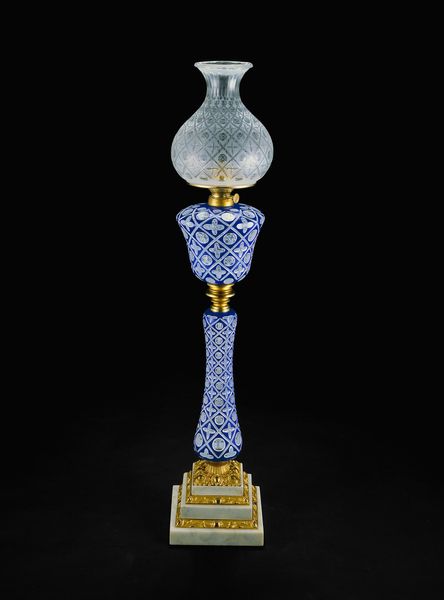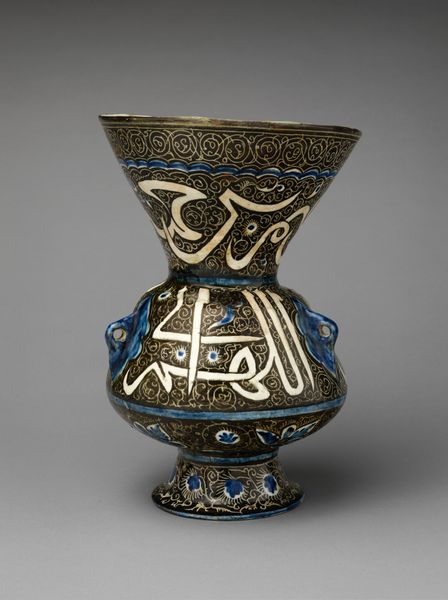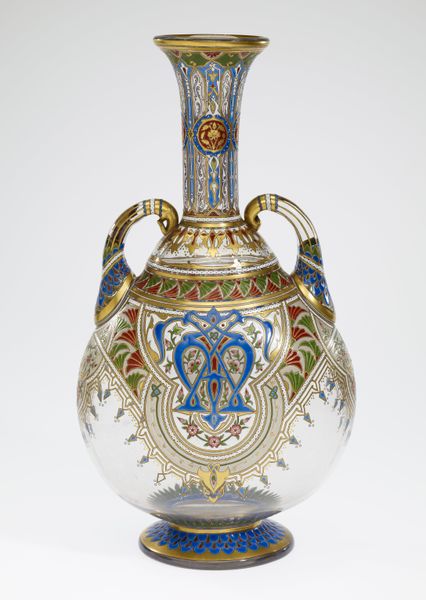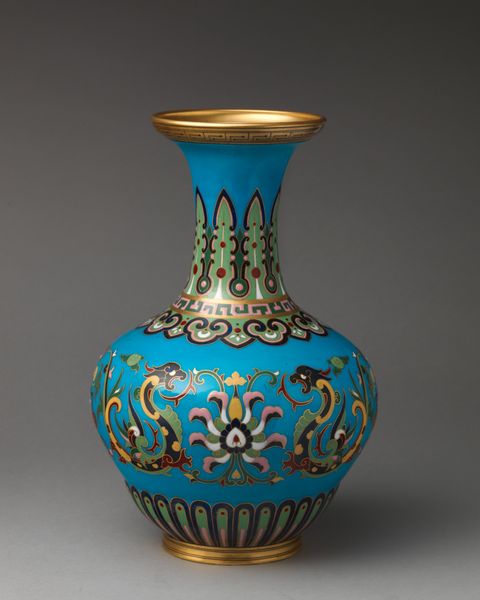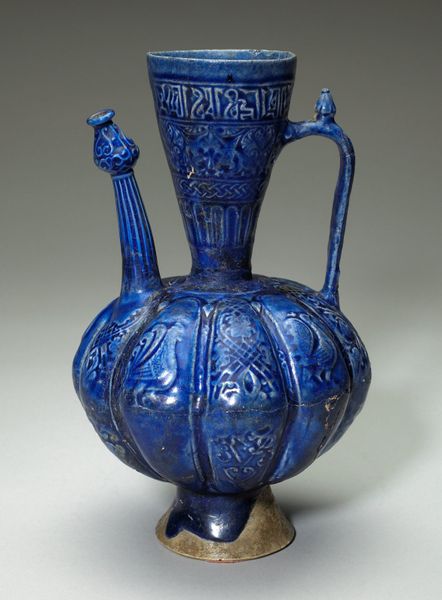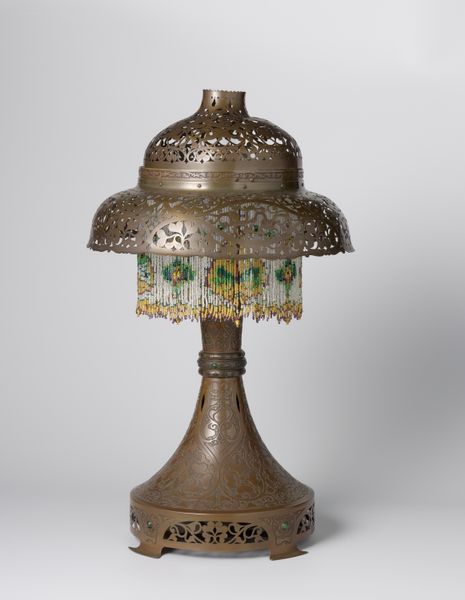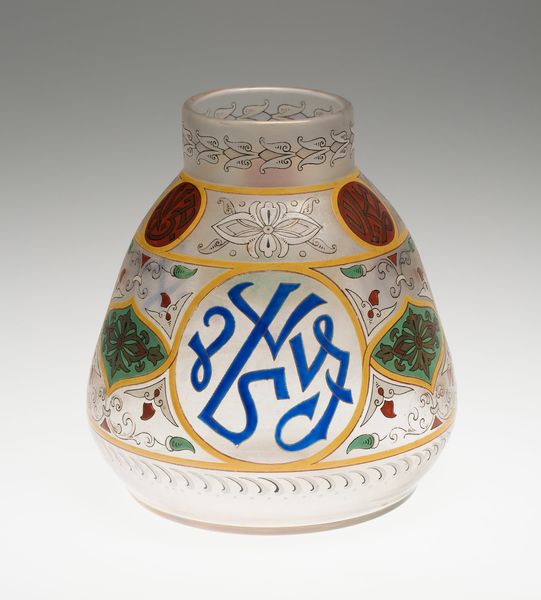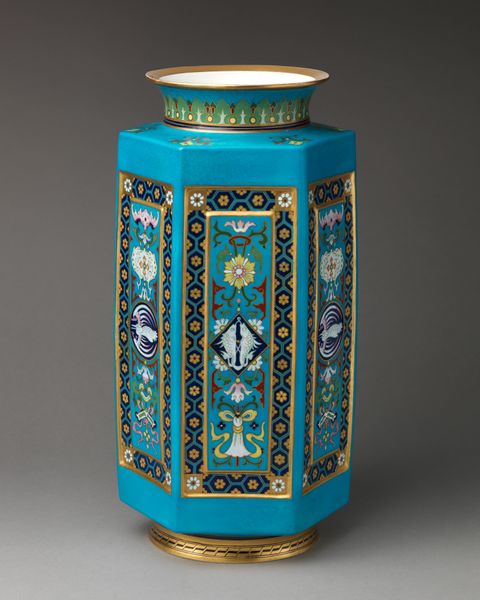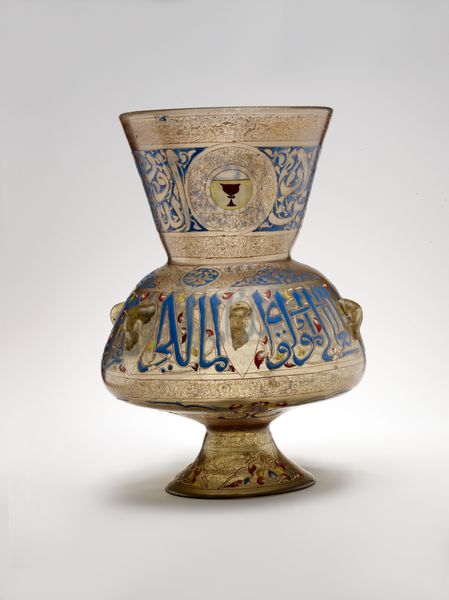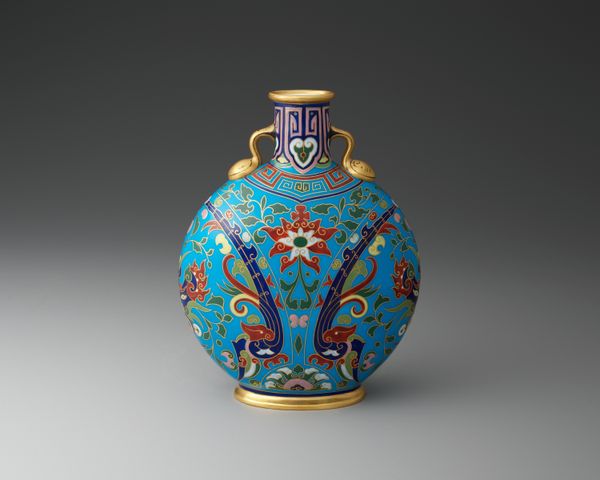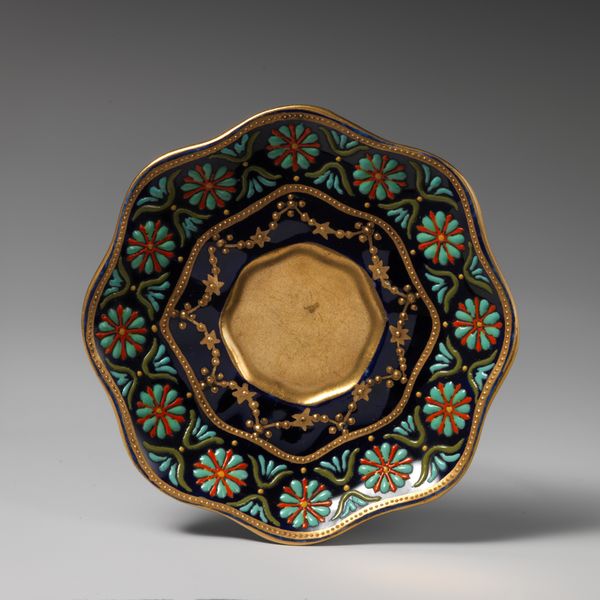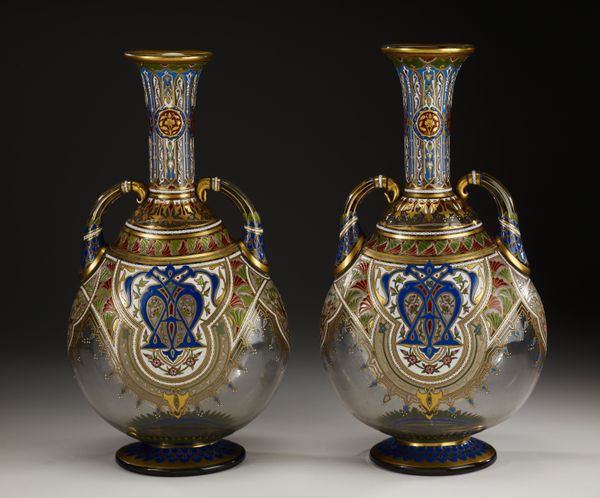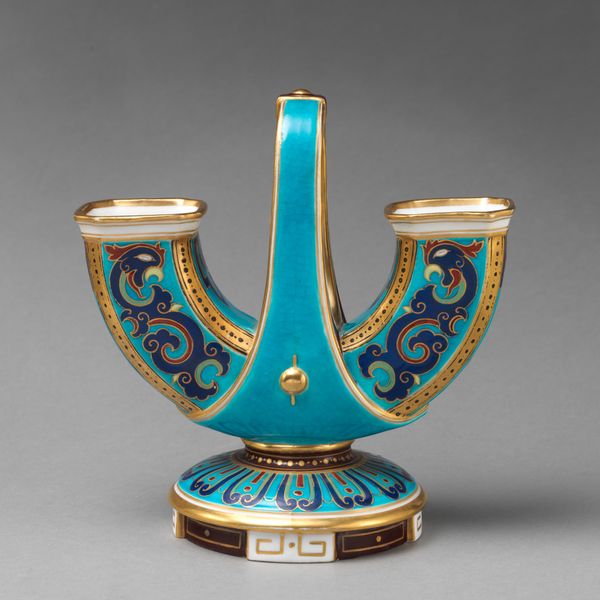
ceramic, earthenware
#
ceramic
#
earthenware
#
ceramic
#
islamic-art
#
decorative-art
Dimensions: 14 1/4 x 10 x 10 in. (36.2 x 25.4 x 25.4 cm)
Copyright: Public Domain
Curator: The work before us, presently residing here at the Minneapolis Institute of Art, is a ceramic earthenware piece by Joseph-Théodore Deck, entitled "Vase in the form of a mosque lamp," created around 1870. What strikes you initially about this object? Editor: Well, aside from the fact it feels a bit paradoxical—a vase imitating a lamp—the most striking feature is its rich ornamentation. A blend of blues and greens set against that crisp white calligraphy. It feels quite opulent, almost ostentatious. Curator: I agree. The color palette carries certain cultural weight. The turquoise specifically, appearing repeatedly, holds great symbolic importance in Islamic art—often linked to notions of paradise and purity. This shade, combined with the stylized calligraphy, transports the viewer. Editor: Yes, and considering Deck's broader artistic context, it’s fascinating to see how he absorbed and reinterpreted Islamic motifs, given that he wasn’t part of that cultural milieu himself. The mosque lamp, traditionally holding profound spiritual significance within Islamic architecture, takes on a new identity here—transformed into a decorative vessel for a European audience. What do you make of that translation? Curator: It reflects the 19th-century Orientalist fascination with the ‘exotic’ East. While some view Orientalism critically as a projection and distortion, it also fostered an exchange of artistic ideas, seen in Deck’s emulation and adaptation. The inclusion of this imagery created a potent symbolic association with spirituality. Do you consider that valid? Editor: Valid, but within limits. The decorative aspect almost overshadows any deeper understanding. The object flattens complex cultural realities into pleasing aesthetics, which risks losing its original meaning. Yet, one might also argue that Deck's adaptation made Islamic art more accessible, even fashionable. What remains crucial is understanding that translation comes with a heavy dose of interpretation and historical context. Curator: Ultimately, the object speaks volumes, sparking discussion around cross-cultural influence, artistic license, and how societies assign new significances to imagery across different eras and geographic contexts. Editor: Indeed. This vase stands as a reminder of how cultural symbols evolve and the nuanced ways art both reflects and shapes historical perceptions.
Comments
minneapolisinstituteofart almost 2 years ago
⋮
Théodore Deck's interest and skill in reproducing traditional Persian designs and colors is seen with this vase. It is decorated in arabic lettering and the vivid turquoise blue color often associated with Isnik wares. In fact, the form of this vase is inspired by Islamic mosque lamps made in Syria and Egypt during the 14th century. Ancient objects and motifs from the Middle East proved to be popular sources for decorative objects during the Aesthetic Movement.
Join the conversation
Join millions of artists and users on Artera today and experience the ultimate creative platform.

